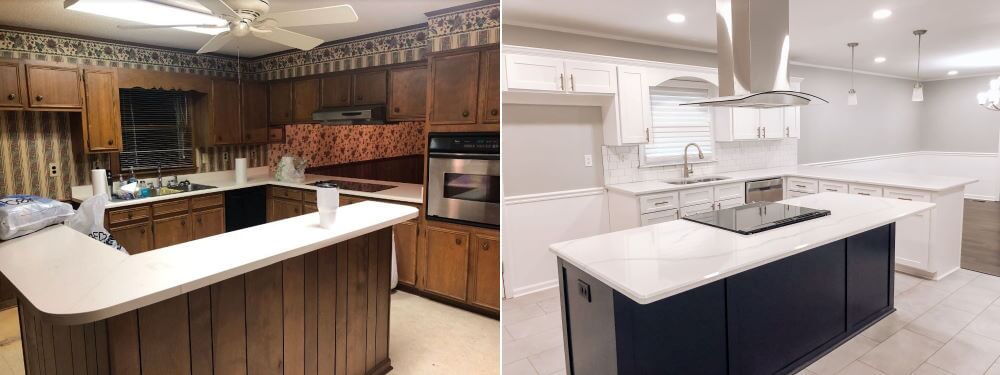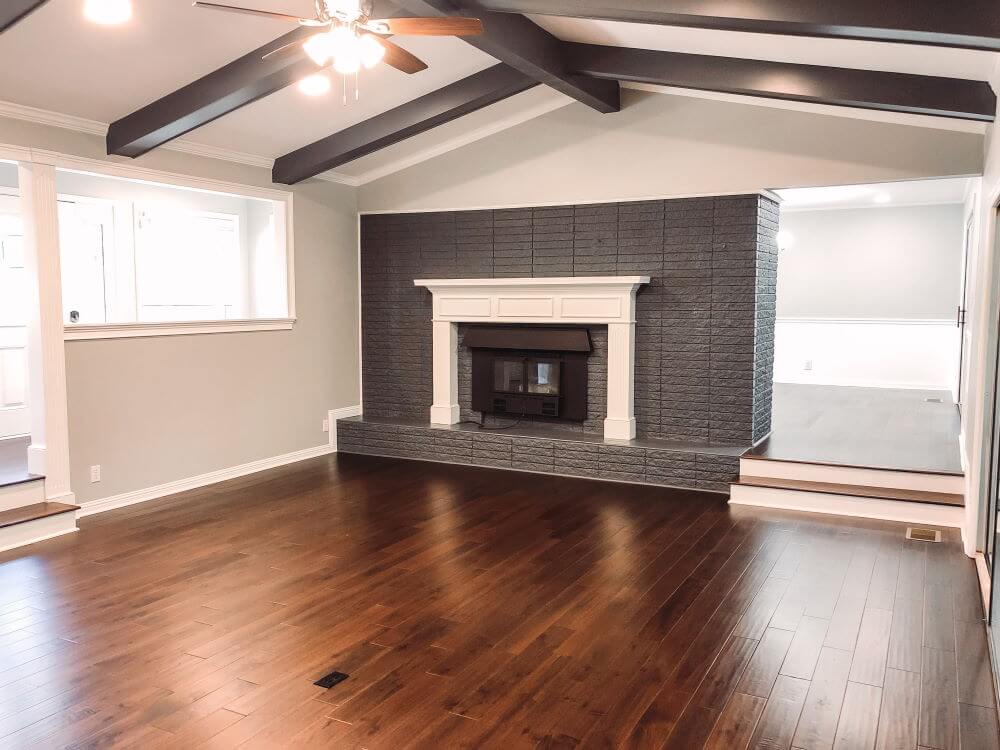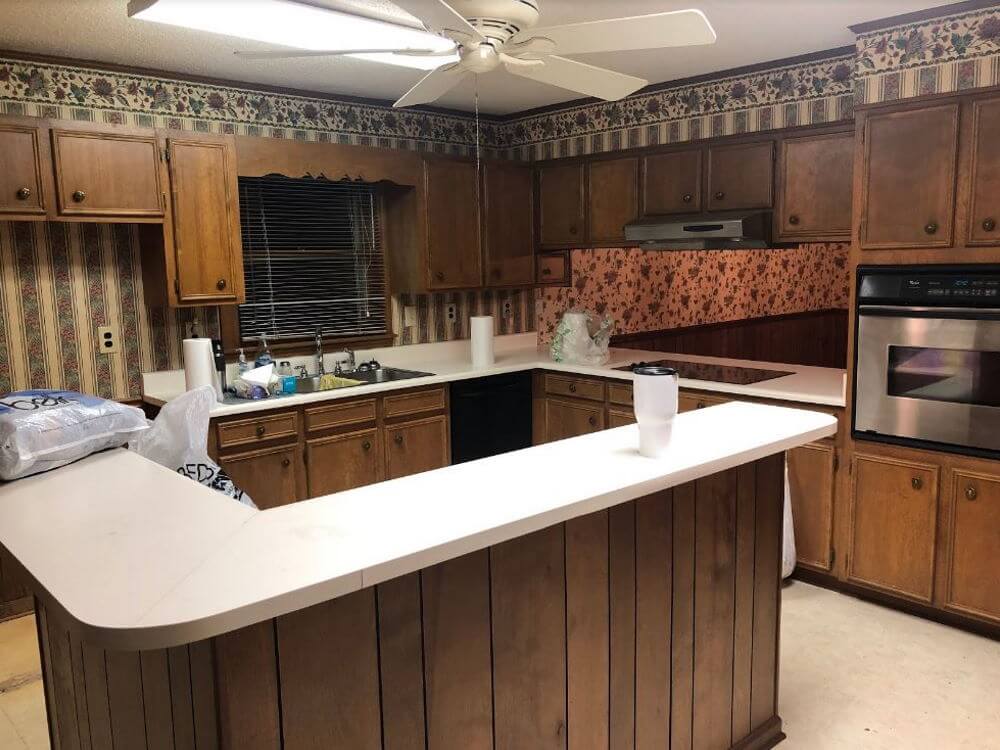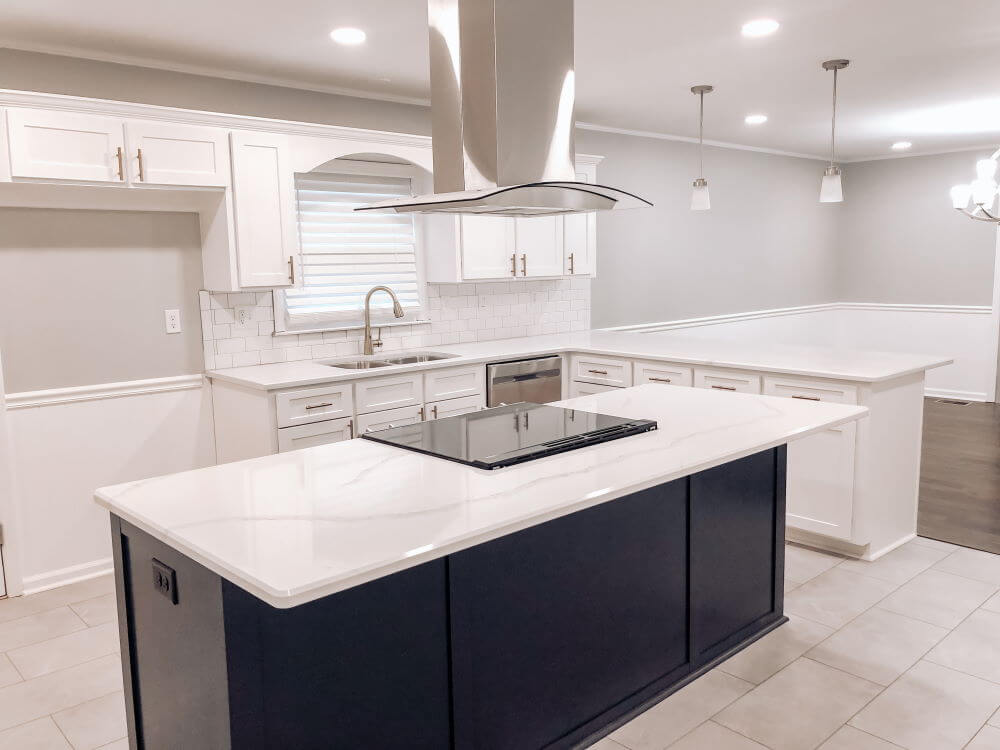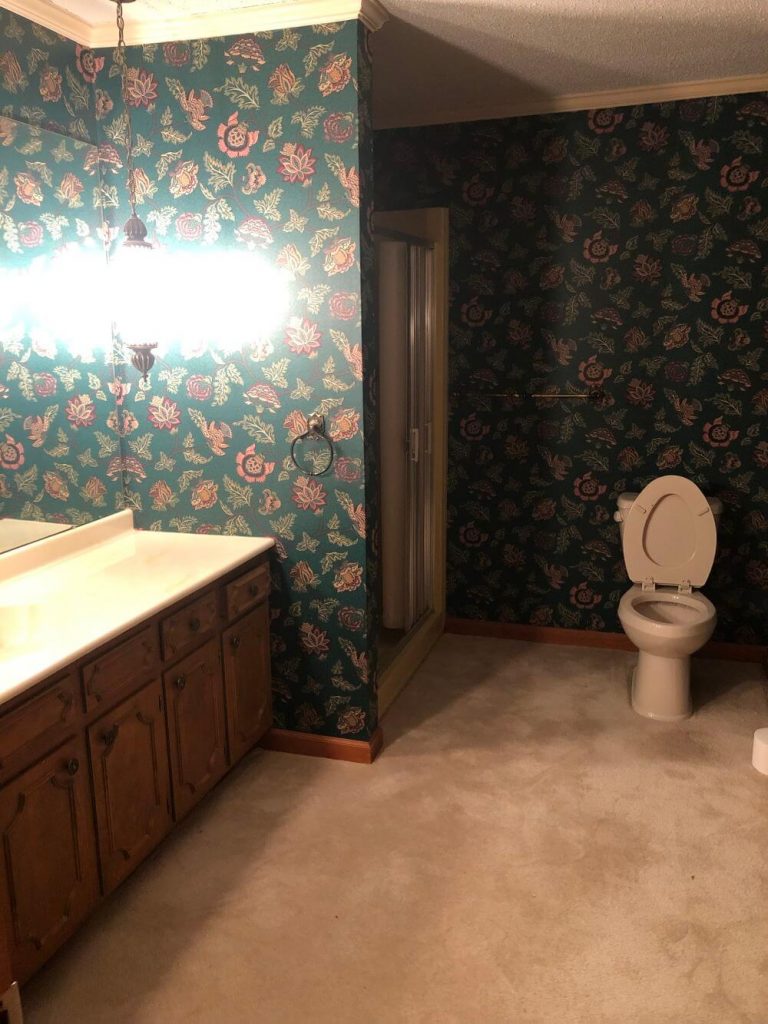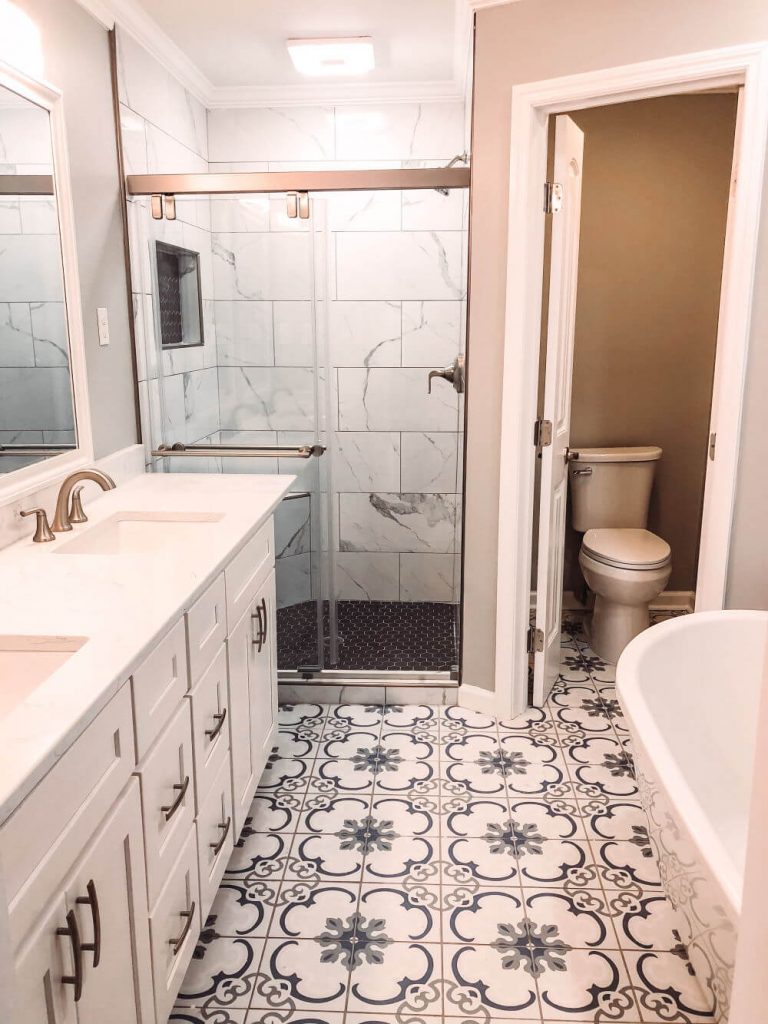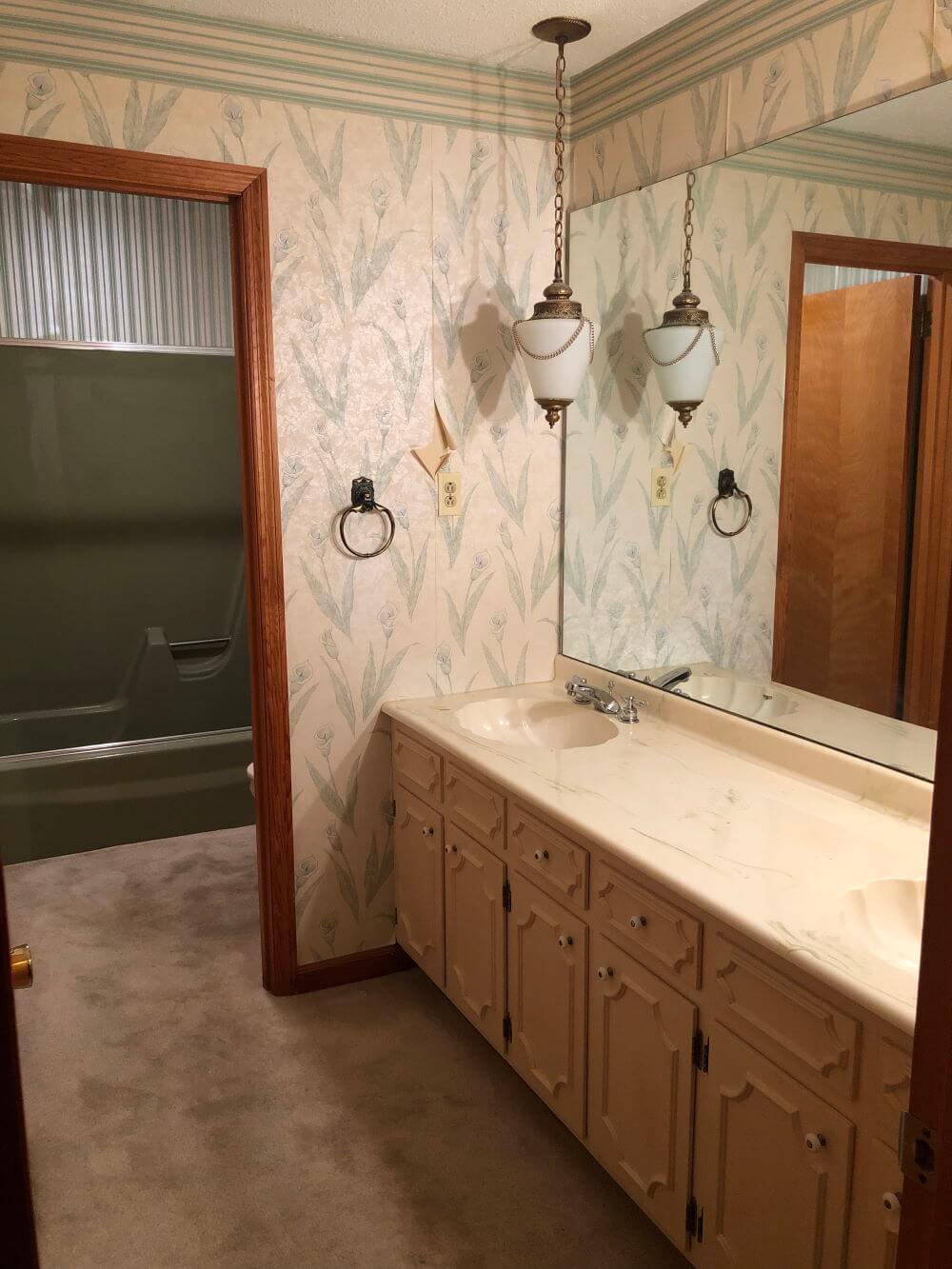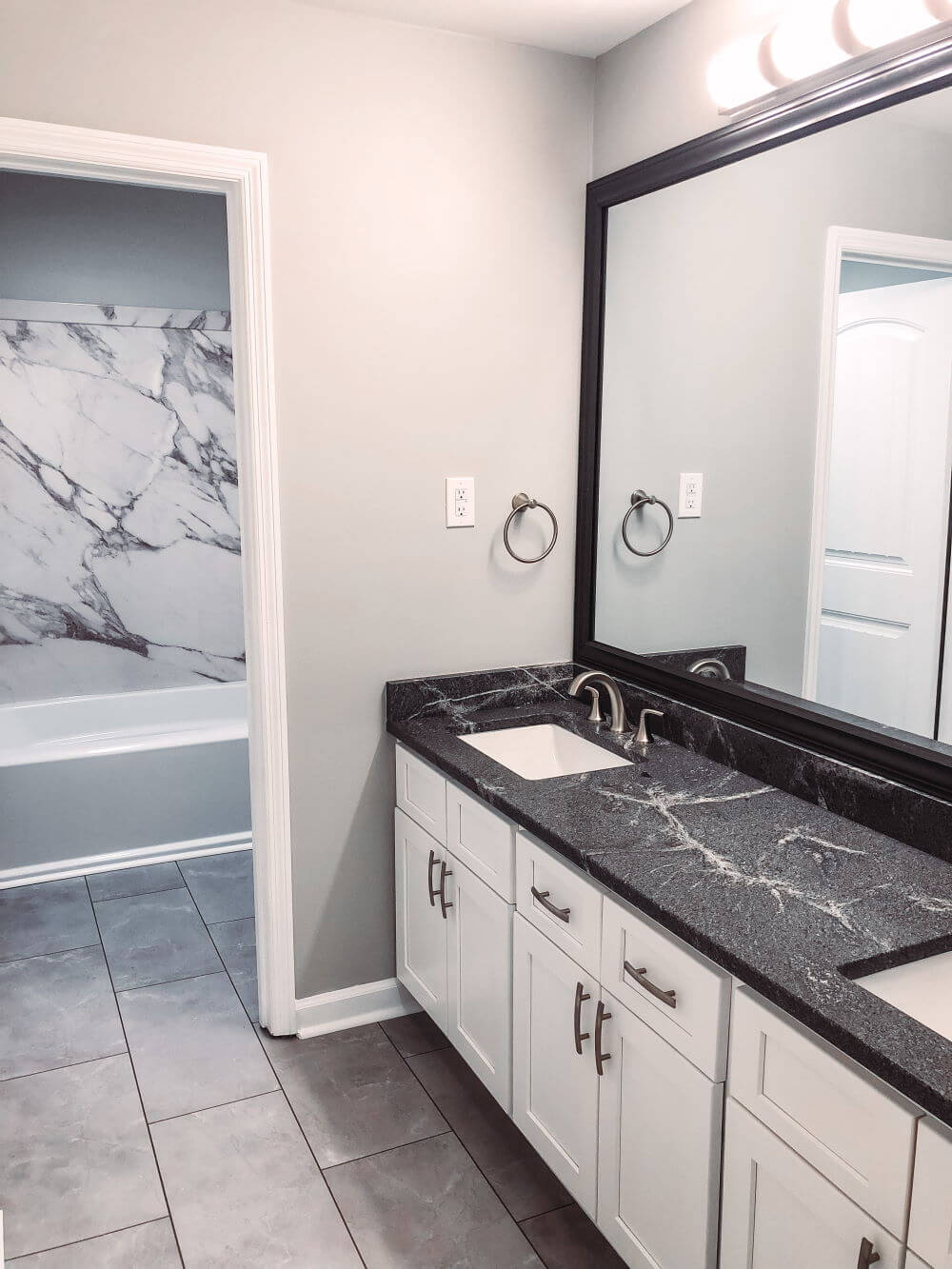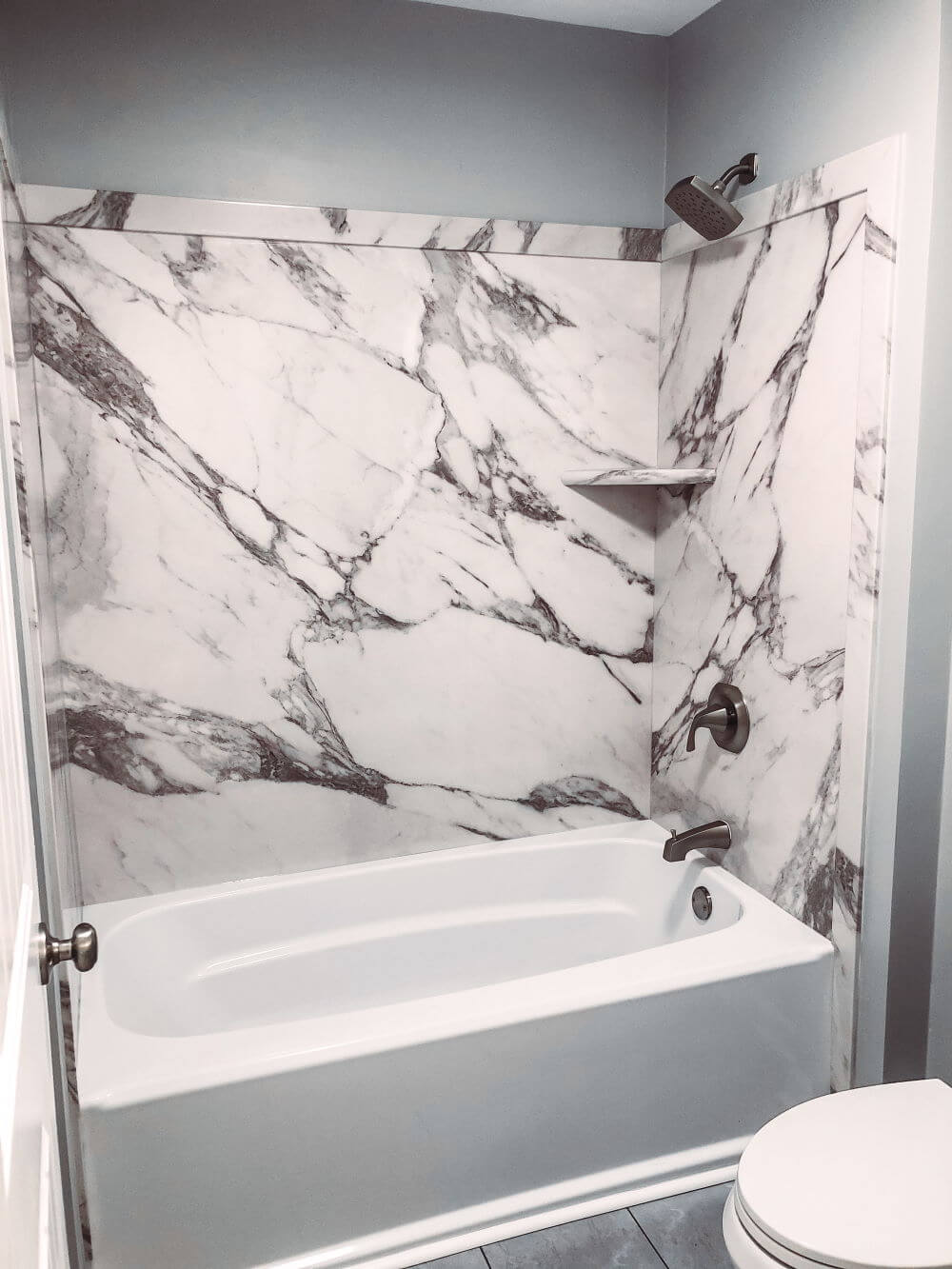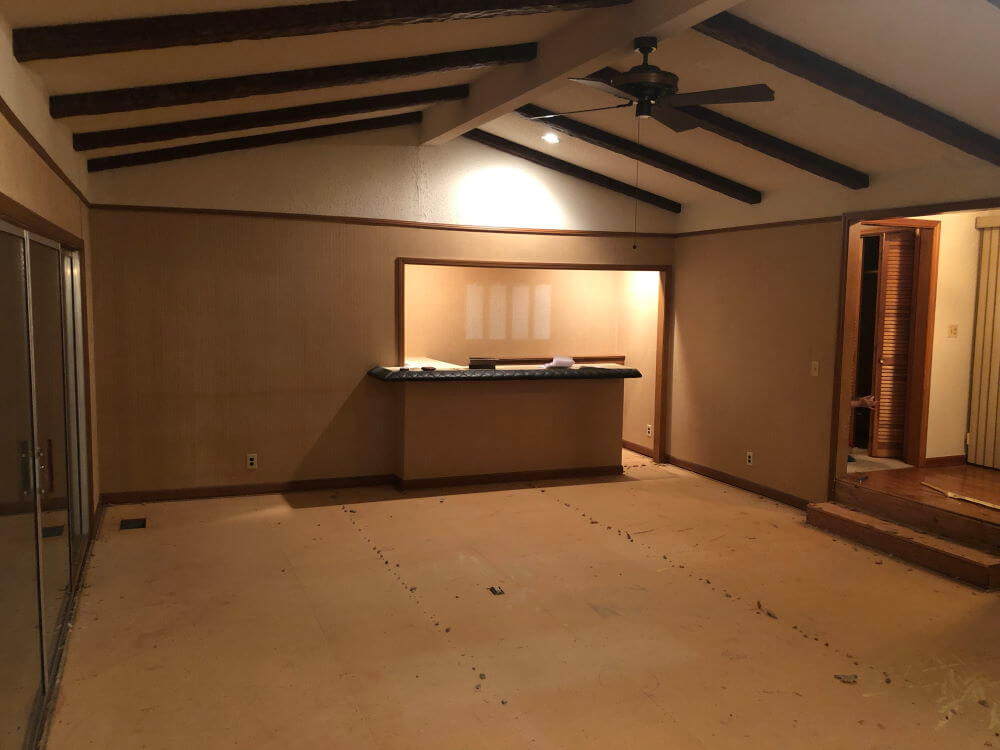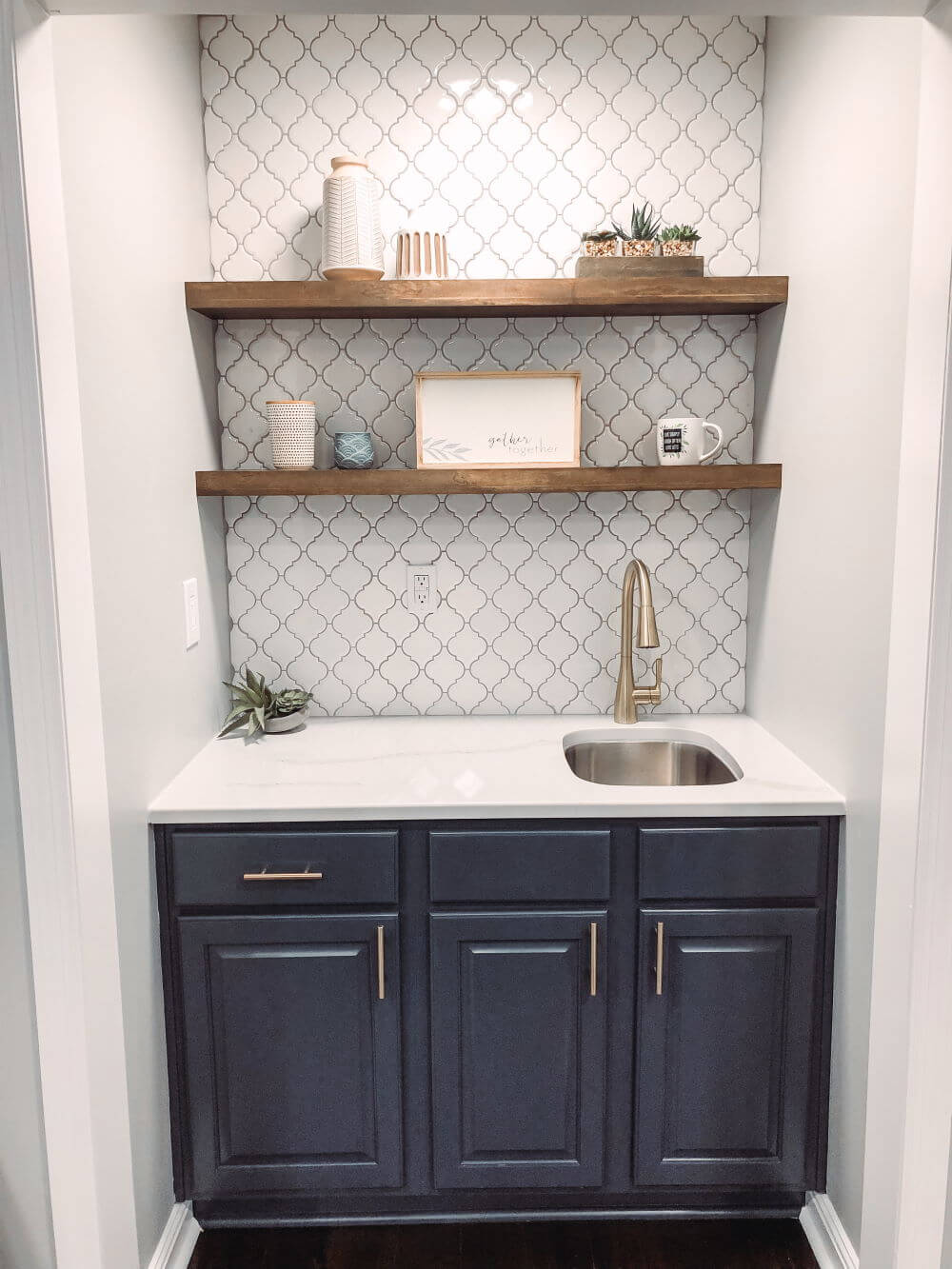Please note – This is a partner post written by Jordan Fulmer, a highly experienced wholesaler, house flipper and real estate investor.
Let me start by saying that this is not the average profit we make on every house we flip. I wish it was, but it just isn’t the case.
However, these types of deals are out there if you keep looking and building your skills and relationships along the way.
For anyone looking to get started flipping houses or take their business to the next level, this is a case study of everything we did to find this deal, renovate it, and sell it for a $120K net profit!
House Flipping Before and After Photos
Living Room
Kitchen
Main Bathroom
Finding a House to Flip
Nearly every real estate investor’s most significant challenge is sourcing deals, and we have always struggled with that too.
We found this house using direct mail. At the time, we were using a service called postal impact. They are a one-stop shop for direct mail marketing and are extremely helpful in generating targeted lists and creating eye-catching mail pieces.
The funny part about this lead is I don’t know how the sellers got on our mailing list. This was during the summer of 2020, and postal impact had worked on a list of “at-risk landlords” that were potentially affected by the pandemic. But the sellers of this house weren’t landlords at all! They were long-time friends of the lady that owned the house who had recently passed away, and they were responsible for selling the property.
But either way, they got our card and called us. If you are consistent with marketing, you’ll get lucky every now and then. I like the quote, “Luck is the residue of design.”
Even though this fantastic deal came from direct mail, we began seeing the leads from this strategy dry up and decided to switch gears. And we’ve tried about every marketing strategy there is – from cold calling, to driving for dollars, to door knocking. However, our current focus is finding real estate deals through SEO. Although it takes a lot of work to get it started, we recommend it to anyone looking to scale up their lead generation.
What Made This House a Good Flip
One of the primary benefits of this house was its location. It was in a great, established neighborhood, in the most desired school system in the area, and within a few minutes of many restaurants and grocery stores.
Overall, the house was in fairly good condition. Everything was in working order; it was just outdated. It was nice to focus on mostly cosmetic updates instead of having to worry about repairing problems simultaneously. We did make some layout changes by adding and removing walls, but that was our own choice.
One nice feature about the property was that it had a beautiful stream that cut through the backyard and beside the house. Many times, we took a break from working on the house to enjoy the gurgling of the water. Any bonus features like this can go a long way in helping you get top dollar when selling a home!
Ultimately, what made this house a good flip is the numbers. Even if the features listed above aren’t present on a house, but the numbers make sense, it can be a profitable deal. We learned early in real estate investing to fall in love with numbers and not houses.
Negotiating a Profitable Deal
As I mentioned, the numbers have to make sense to commit to flipping a house. But the issue is that sellers typically want to sell their homes for as much as possible. That is where negotiation occurs.
But the thing is, most of our “negotiations” with homeowners are not the bare-knuckle haggling you see on Pawn Stars. On this deal, we simply broke down our numbers with the sellers, starting with the projected ARV and subtracting off all of the expenses involved with rehabbing and selling the house. This way, they saw where we were coming from and understood that we were not just making up a lowball number. Although this approach won’t work with every seller, they explicitly told us that they really appreciated the details we shared.
Our agreed-upon purchase price was $170,000. However, some things came up during our due diligence period that we weren’t initially aware of. The most significant issue was that the entire house was wired with aluminum wiring. Rewiring a house can be a tremendous expense. Also, I realized that the square footage in the public records was slightly larger than the actual size of the house. When you’re planning to sell for around $160 per square foot, even a 200 square foot discrepancy can make a huge difference!
Because of these findings, we were able to renegotiate a price of $155,000. As you can see, performing your due diligence before purchasing a property is essential. An experienced home inspector is a crucial member of your team as a flipper.
How We Funded This Flip Project
On this deal, we partnered with some very good friends of ours that we have done multiple deals with. You could call it a form of private lending or a real estate partnership.
The share of responsibilities was something like this:
- Our responsibilities
- Found and negotiated deal
- Contributed 75% to the rehab
- Managed the sale of the property
- Partners’ Responsibilities
- Funded the entire purchase and rehab (although we ended up carrying most of the rehab expenses until the end of the project)
- Contributed 25% to the rehab
We ended up splitting the net profit evenly on this deal. You may be thinking that we could have made more for ourselves had we gotten a loan to fund the deal instead of partnering.
And you’re likely correct!
However, it helped to have our partners with us because this was the largest project we had taken on, and they have a lot of experience with renovations. Also, the entire project took nearly a year from start to finish, and it was convenient not having to worry about interest payments.
We are able to work well with our partners because we set clear expectations upfront and are determined to put our relationship above anything that comes up with the house. Without that, the stress and turmoil from a big project can sour a relationship.
Original Deal Analysis
When we first purchased it, we estimated the home’s value to be around $300,000 after repairs and expected to spend about $50,000 on the rehab. With our purchase price of $155,000, our estimated profit after agent fees, closing costs, and holding costs was around $70,000. This would be split between our partners and us.
As you’ll see, our scope changed as we went along, but the home also appreciated in value. So our final numbers looked significantly different from our initial estimate.
The Rehab Process
Updating this house was a major project. Not only was the to-do list a mile long and ever changing, but we also did a large percentage of the work ourselves, which made the rehab process take about eight months.
That is something that flippers should always consider. While you can undoubtedly save a lot of money by doing most of the work yourself, it will take much longer to complete the project. You must weigh out what you value your time at and whether you are okay with the project taking longer to complete.
Our Main Renovations
As I mentioned, our list of renovations was never-ending. Anyone who flips houses knows that the details can wear you out. However, here are some of the main renovations that we performed:
- Updated kitchen cabinet layout – Removed some upper cabinets and added island
- New countertops throughout
- Kept cabinet frames and added new doors and drawer fronts
- New light fixtures and added recessed lighting
- New flooring throughout
- Knocked out wall between front entryway and living room
- Changed wet bar in living room to coffee bar and half bathroom
- Changed outdated tub/shower combo in hall bath to new tub with luxury surround
- Complete overhaul of master bathroom
- Tile shower
- Added bathtub
- Replaced sliding glass door with glass block window
- New vanity
- Added toilet room
Kitchen Renovations
Kitchens are one of the primary selling points of a home, so we decided to focus a large percentage of our effort on making this kitchen immaculate. We had our work cut out for us on this one, though!
This house was built around 1970, and nearly everything in the home was outdated. Even though everything was in working condition, it needed a major facelift to fetch top dollar.
Our first task in renovating this outdated kitchen was updating the cabinet layout. To save money, we decided to keep the bulk of the cabinet frames and just replace the doors and then paint them. This is a great way to cut costs on a flip house and still give the kitchen a complete makeover. We removed the upper cabinets between the kitchen and dining room to open up that space.
It was acceptable to do this because there was plenty of cabinet storage throughout the rest of the kitchen. We also installed a new island to add more cabinet storage and accommodate a range. To finish it off, we installed Brunello quartz countertops that were absolutely dazzling! Check out what it looked like once we were done!
Bathroom Renovations
Aside from kitchens, bathrooms are one of the most important rooms when selling a house. We took two completely different approaches to the two bathrooms in this house. In the hall bathroom, we kept the layout the same but gave it a complete facelift. We completely overhauled the master bathroom by changing the layout, moving walls around, and more.
This was the hall bathroom when we bought the house – check out that green bathtub! We removed it and added a new bathtub with a luxurious surround. This type of surround saved us a lot of money compared to paying someone to install tile. Once again, we kept the cabinet frame and installed new doors and drawer fronts. Check out the finished product!
The master bathroom was a completely different story. We took a wall down, added new walls, and converted an exterior door into a window. This project was a ton of work, but it was likely my favorite transformation in the entire house.
It took many iterations of floor plan designs because we were not working with much square footage. I would advise anyone looking to change the layout of a room to use a free sketching tool to check how everything fits after your modifications.
Adding a Half Bathroom
We utilized this space by creating an extra half bathroom and using the rest of the space for a coffee bar. Based on the price point we were hoping to sell the house at, we knew it would be much easier if there were an extra half bathroom.
This was one of those projects that came up in the middle of the flip. We had initially not thought of this and planned to use the space for an extra closet. Although it took extra money and effort to put in another bathroom, we believe it was worth it. The new coffee bar was in the living room, and the bathroom entrance was in the hallway.
Selling the House for Top Dollar
Remember when I projected the house to be worth around $300,000? Well, the rehab process took about eight months, and we were in a hyper-appreciating market, so it was worth well more than that by the time we listed it.
We had considered multiple options for selling the home while getting it ready, such as listing it ourselves or using a real estate agent. We decided to use a real estate agent, and it paid off.
We listed the house for $299,900, well below what we knew it was worth. The reasoning was that this low price would generate a ton of excitement and create an auction environment. That’s precisely what happened because we received over a dozen offers over the weekend, with the offer we accepted being at $370,000. Not only that, but they offered to buy the house as-is, with an inspection only for their peace of mind.
We were hoping for this because we had never gotten around to rewiring the entire house to remove the aluminum wiring. If we had listed the house ourselves, we likely would not have received such an abundance of offers that allowed us to pick the one that worked best for us.
It may sound counterintuitive to list a house well below its market value, but it often results in a higher purchase price. Many people try to list their houses for more than they are worth, and the listing ends up becoming stale. Listing it lower has the exact opposite effect and generates a frenzy of prospective buyers.
Final Deal Analysis
While our sales price was much higher than we originally anticipated, we spent significantly more on the rehab than we budgeted upfront. Here is a breakdown of the deal:
- Purchase Price: $155,000
- Rehab Cost: $70,000
- Sales Price: $370,000
- Agent Commissions: 22,200
- Net Profit: Approximately $120,000 (after closing and holding costs)
Final Thoughts on this House Flip
This was by far the biggest project we had taken on up to this point, and we learned a ton.
You can look at the overage on the rehab budget two different ways. On the one hand, you could say that we underestimated the scope of work. On the other hand, you could say that we did a bad job controlling scope creep. For this project, I would say it was more of the former. Most of the tasks we added along the way significantly added value to the home and increased our bottom line. So when estimating a rehab budget on a new flip house, be sure to think about the level of finishes it will take to bring it up to par with the neighboring houses.
Although we ended up with a handsome profit, we did get a little lucky from the appreciation that the house experienced. If the home’s value had remained constant throughout the entire project, our net profit would have only been about $50,000. This would not be that much considering the amount of work we put into it.
As I mentioned before, we split the profit of this deal with our partners. They funded the project and helped us out a lot during the rehab process. That is something for new flippers to consider. Before you get in over your head on a project, consider finding a partner to do some deals with and learn from. After flipping a few houses together, you will feel much more confident taking on larger projects.
We hope this example will inspire you to take your house-flipping business to the next level!
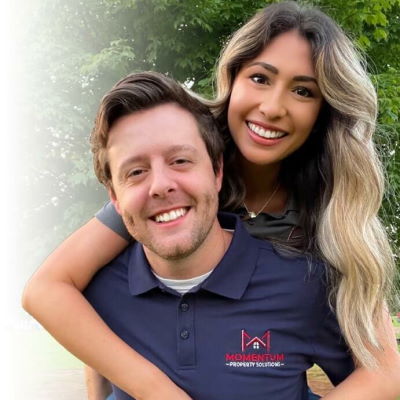
Author Bio: Jordan Fulmer is the owner of Momentum Property Solutions, a house buying company in Huntsville, AL. They specialize in buying houses in tough situations and renovating them to either sell or rent. Jordan also runs the SEO side of their business and regularly writes content about real estate investing, home improvement, SEO, and general real estate topics.
